death
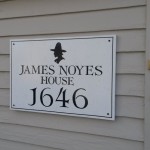
 A while back, I wrote a story about a house in Massachusetts that was built by our ancestor, James Noyes, who is my husband, Bob’s 7th great grandfather. Almost immediately, a cousin of ours, Paul Noyes told me that he had been there many times, and yet another cousin, David Noyes had been invited inside and had pictures. Of course, this was exactly what I was hoping for, because I wanted to talk about the interior of the home, but could not find any pictures online. So, I want to thank David for these beautiful pictures, and Paul for forwarding them to me, so that I can tell a little about the inside of this grand old house. My husband, Bob was sure that the interior had probably been renovated several times since the 1646 date that the house was built, but other than what has been documented, there is no indication of a massive remodel.
A while back, I wrote a story about a house in Massachusetts that was built by our ancestor, James Noyes, who is my husband, Bob’s 7th great grandfather. Almost immediately, a cousin of ours, Paul Noyes told me that he had been there many times, and yet another cousin, David Noyes had been invited inside and had pictures. Of course, this was exactly what I was hoping for, because I wanted to talk about the interior of the home, but could not find any pictures online. So, I want to thank David for these beautiful pictures, and Paul for forwarding them to me, so that I can tell a little about the inside of this grand old house. My husband, Bob was sure that the interior had probably been renovated several times since the 1646 date that the house was built, but other than what has been documented, there is no indication of a massive remodel.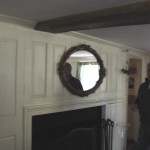

James Noyes, moved to and was co-founder of Newberry, Massachusetts in 1635, bringing with him, his wife Sarah Brown Noyes. Little was documented about where in Newbury they lived before the Noyes home was built in 1646, but the family grew by five children…Joseph, James, Sarah (who died at an unknown young age), Moses, and John. I would assume that their growing family was the reason for the large home to be built. Even with that, the home was not what we would consider large these days. The current home has five bedrooms, but it is my guess that the original probably had only three, a master bedroom for the parents, a bedroom for the boys, and a bedroom for the girls. The house was only one room deep in those years, and while it might have been somewhat small, I can only imagine what stories those walls would tell, if they could 
 talk. My guess is that there would be stories of laughter, sadness, and crying as new babies joined the family. The family grew, with the additions of Thomas, Rebecca, William, and a second daughter named Sarah, after her mother and the first Sarah, who had passed away.
talk. My guess is that there would be stories of laughter, sadness, and crying as new babies joined the family. The family grew, with the additions of Thomas, Rebecca, William, and a second daughter named Sarah, after her mother and the first Sarah, who had passed away.
James and Sarah lived in the house for the remainder of their days, during which time the house saw children come into the family, and children marry and move away, returning now and again to share their children with their parents. Then on October 22, 1656, just seven months after his second daughter named Sarah, was born, James passed away. The house saw the sadness of a family in mourning for its patriarch. Sarah became the head of the family then, and so it remained until her passing on September 13, 1691. James and Sarah were blessed with at least 47 grandchildren…not all of whom lived very long unfortunately. Not much is said about 
 what the children did with the home after their mother’s passing, but while it has been home to a number of families over the many years since it was built, it remains an important historical home and is listed on the National Registry of Historic Places. There were some changes, which added size to the home making it a five bedroom home at this present time. The last time the home was sold was in 2010, and it is my assumption that it was the current owners who allowed our cousin David Noyes to have a tour and take the pictures I now have of this beautiful home.
what the children did with the home after their mother’s passing, but while it has been home to a number of families over the many years since it was built, it remains an important historical home and is listed on the National Registry of Historic Places. There were some changes, which added size to the home making it a five bedroom home at this present time. The last time the home was sold was in 2010, and it is my assumption that it was the current owners who allowed our cousin David Noyes to have a tour and take the pictures I now have of this beautiful home.
 I think that were it not for the danger involved, I could be a storm chaser. I love to watch the shows about storm chasers and about tornadoes themselves. I suppose the main reason I like those shows is that you can watch the awesomeness of nature’s storms, but you don’t really have to deal with the reality of the loss of life and damage to property. It seems more like a scene from a movie. Nevertheless, the reality is that in a real storm situation, tornadoes kill and they damage property. The first recognized storm chaser was David Hoadley, who began chasing North Dakota storms in 1956. Hoadley used data from area weather offices and airports to calculate the possible areas for tornadic activity. Hoadley is considered the pioneer storm chaser and was the founder of Storm Track magazine. With storms such as the Tri-State Tornado which occurred on this day, March 18, 1925, and many others that followed, I’m sure that Hoadley could see that there was a need for someone to find a way to predict the path of these deadly storms.
I think that were it not for the danger involved, I could be a storm chaser. I love to watch the shows about storm chasers and about tornadoes themselves. I suppose the main reason I like those shows is that you can watch the awesomeness of nature’s storms, but you don’t really have to deal with the reality of the loss of life and damage to property. It seems more like a scene from a movie. Nevertheless, the reality is that in a real storm situation, tornadoes kill and they damage property. The first recognized storm chaser was David Hoadley, who began chasing North Dakota storms in 1956. Hoadley used data from area weather offices and airports to calculate the possible areas for tornadic activity. Hoadley is considered the pioneer storm chaser and was the founder of Storm Track magazine. With storms such as the Tri-State Tornado which occurred on this day, March 18, 1925, and many others that followed, I’m sure that Hoadley could see that there was a need for someone to find a way to predict the path of these deadly storms.
The March 18, 1925 tornado traveled across the tri-state area of eastern Missouri, southern Illinois, and southern Indiana, killing 695 people, injuring some 13,000 people, and causing $17 million in property damage. It became known as the Tri-State Tornado, and it shocked the nation. The tornado first touched down in Ellington, Missouri at about 1:00pm, but the worst hit area was southern Illinois. More than 500 of the 695 people lost dies in Illinois, including 234 in the city of Murphysboro and 127 in West Frankfort.
In all, the Tri-State Tornado traveled 219 miles in it’s path of destruction, and was on the ground more than three hours. It ripped through 164 square miles and was more than a mile wide. It traveled at speeds of more than 70 miles per hour. There has never been a worse tornado in the history of the United States. Years after the Tri-State Tornado, scientists discovered the cyclic nature of tornado-producing thunderstorms. These 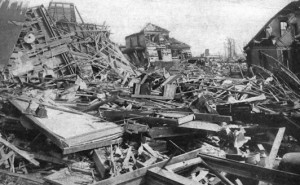 storms are able to produce one tornado after another, in a seemingly continuous damage path, that could easily be mistaken for a single tornado, when they were actually a family of tornadoes. Of course, with all the time that had passed, and the lack of things like Doppler Radar to see what the storm really was, it is nearly impossible to determine 91 years later whether or not the Tri-State tornado was one or a family of tornadoes, it remains in the history books as the longest-tracked and deadliest single tornado in recorded history. I have to wonder if David Hoadley, or someone like him had been able to predict these storms, maybe the loss of life would have been much lower.
storms are able to produce one tornado after another, in a seemingly continuous damage path, that could easily be mistaken for a single tornado, when they were actually a family of tornadoes. Of course, with all the time that had passed, and the lack of things like Doppler Radar to see what the storm really was, it is nearly impossible to determine 91 years later whether or not the Tri-State tornado was one or a family of tornadoes, it remains in the history books as the longest-tracked and deadliest single tornado in recorded history. I have to wonder if David Hoadley, or someone like him had been able to predict these storms, maybe the loss of life would have been much lower.
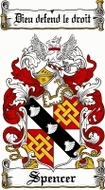 The Spencer line in America began with four brothers who, along with one sister and her husband, immigrated to America in about 1630. The brother my family descends from is Michael, of whom the least is known. I’m not sure why so little is known about my ancestor, but I have decided to start a journey to find out…along with the journeys of so many others I’m working on. I hope not to hit a dead end. My sister, Cheryl Masterson inspired this new tangent I have set out on, when she asked me which line we came from. She and I are both members of the Spencer Historical and Genealogical Society’s Facebook group. Her thought was to see if there were other members who come from Michael Spencer’s line, but to date, there are not. Michael’s line is a bit of a mystery at this point. While we know that we and a number of other family members come from that line, we are not a group large in number.
The Spencer line in America began with four brothers who, along with one sister and her husband, immigrated to America in about 1630. The brother my family descends from is Michael, of whom the least is known. I’m not sure why so little is known about my ancestor, but I have decided to start a journey to find out…along with the journeys of so many others I’m working on. I hope not to hit a dead end. My sister, Cheryl Masterson inspired this new tangent I have set out on, when she asked me which line we came from. She and I are both members of the Spencer Historical and Genealogical Society’s Facebook group. Her thought was to see if there were other members who come from Michael Spencer’s line, but to date, there are not. Michael’s line is a bit of a mystery at this point. While we know that we and a number of other family members come from that line, we are not a group large in number.
So, let us begin. About five years after his arrival in America, that is, in or about 1635, Michael and his brother Gerard moved to Lynn, Essex County, Massachusetts, where Gerard reportedly appears as a journeyman in Lynn in 1635. Then we see that after the death of his brother Michael, Gerard was appointed administrator of his brother’s estate in 1653. So, what happened to Michael between 1635 and 1653. Michael married Isabel West in 1636, the year after his move to Lynn, Massachusetts. Isabel married a second time about a year after Michael’s passing, to a man named Thomas Robbins. Michael and Isabel were the parents of five children, John, Hannah, Susannah, Michael, and William.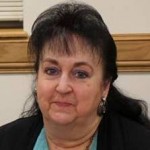
On September 1, 1634, Michael was granted four acres on the west side of the river in Cambridge. It was also recorded on October 10, 1635, that he owned one parcel on the south side of the river, also about four acres. And in the 1638 division of land at Lynn, Massachusetts he received thirty acres. Still, since he passed away at the very young age of just 42 years, I have to wonder if he was somewhat sickly. It’s possible that his sons worked the land in his stead. I have not found any indication of him being in poor health, but I also have not found any job that he held within the community either, so it makes me wonder.
On November 29, 1653, Michael’s brother Gerard was appointed administrator of Michael’s estate, and charged with the task of disposing of the estate for the needs of his children. The documentation states that the estate was small, and so it was necessary to sell it to help pay for the upbringing of his children. Bringing up five children is no inexpensive task…and at the time of Michael’s passing, none of the children were married yet. The older children might have been out of the home already, however, because on November 30, 1654 the court, with  Gerard’s consent and agreement gave some of the estate to Thomas Robbins, because he was raising one of the children, Michael, who was six years old. This was because Thomas had married Isabel.
Gerard’s consent and agreement gave some of the estate to Thomas Robbins, because he was raising one of the children, Michael, who was six years old. This was because Thomas had married Isabel.
That is about the extent of Michael Spencer’s story. His life was too short to have done very much with it, but he does hold as a claim to fame, the fact that he was indeed one of the original four Spencer brothers who was responsible for most of the Spencer line in America today. I can tell you that his children and other descendants faired nicely, however…because, my sisters and I are five of them. And there are many more, just in my grandparents family alone family alone…even if our total number is small.
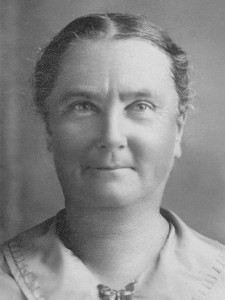 When a young woman gets married, she expects to live happily ever after. Unfortunately, for my husband, Bob Schulenberg’s second great grandmother, Mary LuLu Taylor, that was not to be. Mary, who went by LuLu, married Bob’s second great grandfather, James Leary on September 30, 1880 in Shelby, Missouri. They were very much in love. The young couple would move to Forsyth, Montana and on January 4, 1886, she gave birth to Bob’s great grandfather, Marion Chester Leary, who went by Chester for most of his life. Now their family had entered the next phase. They were no longer a couple, but rather, a family…at least for a while. The couple would move again, this time to St Louis, Missouri. March 26, 1888 would find LuLu a widow, with a two year old son to raise…alone.
When a young woman gets married, she expects to live happily ever after. Unfortunately, for my husband, Bob Schulenberg’s second great grandmother, Mary LuLu Taylor, that was not to be. Mary, who went by LuLu, married Bob’s second great grandfather, James Leary on September 30, 1880 in Shelby, Missouri. They were very much in love. The young couple would move to Forsyth, Montana and on January 4, 1886, she gave birth to Bob’s great grandfather, Marion Chester Leary, who went by Chester for most of his life. Now their family had entered the next phase. They were no longer a couple, but rather, a family…at least for a while. The couple would move again, this time to St Louis, Missouri. March 26, 1888 would find LuLu a widow, with a two year old son to raise…alone.
For a young mother in the 1880s, being a widow didn’t leave her with a lot of options. LuLu moved back to Shelby, where she met her second husband, James Begier. They 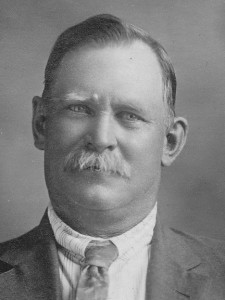 were married on March 18, 1890. LuLu thought her life had turned around, and in many ways, she was right. LuLu and James Begier went on to have Minnie in 1893, John in 1896, and Mable in 1902. I’m sure that by 1902, LuLu felt like her life was finally perfect. She had her husband and her children. Nevertheless, life would not reamin so perfect forever. This marriage would not be a happily ever after marriage either, because while James Begier’s death date is not known at this time, the last known census showing James Begier was in 1910.
were married on March 18, 1890. LuLu thought her life had turned around, and in many ways, she was right. LuLu and James Begier went on to have Minnie in 1893, John in 1896, and Mable in 1902. I’m sure that by 1902, LuLu felt like her life was finally perfect. She had her husband and her children. Nevertheless, life would not reamin so perfect forever. This marriage would not be a happily ever after marriage either, because while James Begier’s death date is not known at this time, the last known census showing James Begier was in 1910.
LuLu would remarry again on February 19, 1919 in Rosebud, Montana to Milo Warren. She had moved back to Forsyth because her eldest son, Chester Leary, was living there, with his family. When a woman is widowed, it is often the best option to move to where family lives…especially in those days. As with LuLu’s previous husbands, Milo would predecease her on August 21, 1928. Once again, LuLu moved. This time to be near her youngest daughter, Mabel Begier Brown. I don’t really know if Mabel was sick during this time or not, but LuLu passed away on April 26, 1929 in Fletcher, Oklahoma, and her daughter, Mabel Begier Brown passed away on 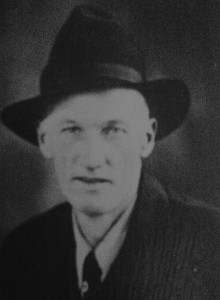 April 2, 1931 in Elgin, Oklahoma, and the young age of only 28 years.
April 2, 1931 in Elgin, Oklahoma, and the young age of only 28 years.
While, LuLu’s life was filled with times of sadness, she did nevertheless, live a full life. She had the opportunity to live in several places, and she was blessed with four children, and many grandchildren and multiple levels of great grandchildren, including my husband and his siblings, by daughters and their cousins, and my grandchildren and their cousins. While I never had the opportunity to meet LuLu in person, I have long beed intrigued by her life. My only regret is that I don’t have pictures of all her husbands…just James Begier, nor of her children…just Chester Leary. Nevertheless, I feel blessed to have those few. LuLu was born on August 31, 1861, and today is the 154th anniversary of her birth. Happy birthday in Heaven Mary LuLu Taylor Leary Begier Warren. I look forward to meeting you someday.
 Anyone who has ever tried to trace their family history knows just how difficult it can be to find the records sometimes. Early families kept their records mostly in the family Bible, or some other type of record keeping book, and if the records weren’t kept where they were safe, or where the next generation knew to look for them, they were often lost. It seems that some nations were more ahead of the pack when it came to registering the people…where it was for a good purpose or not. Later it was only churches that kept records of these things.
Anyone who has ever tried to trace their family history knows just how difficult it can be to find the records sometimes. Early families kept their records mostly in the family Bible, or some other type of record keeping book, and if the records weren’t kept where they were safe, or where the next generation knew to look for them, they were often lost. It seems that some nations were more ahead of the pack when it came to registering the people…where it was for a good purpose or not. Later it was only churches that kept records of these things.
The Bible tells us in Luke 2:1-5, “And it came to pass in those days that a decree went out from Caesar Augustus that all the world should be registered. This census first took place while Quirinius was governing Syria. So all went to be registered, everyone to his own city. Joseph also went up from Galilee, out of the city of Nazareth, into Judea, to the city of David, which is called Bethlehem, because he was of the house and lineage of David, to be registered with Mary, his betrothed wife, who was with child.” In many way, I suppose it was from this point on that the Romans and Jews began to keep such clear records, although, according to the Bible and the lineage of Jesus told there, the Jews had kept very clear records before that. It was clear record keeping of this type that made it possible for families to know their heritage.
As I have searched for my own ancestors, I have found that in more modern times, such as the 1000 to 1700s, the record keeping was not so good. I don’t know if people were just more lax about it, or if there seemed to be no good place to store these things. I could also be that in cases where good records were kept, fire, flood, or some other natural disaster destroyed them later on. I find that to be such a sad state of affairs, because it can put up a wall between the genealogical researcher and the valuable information they are searching for.
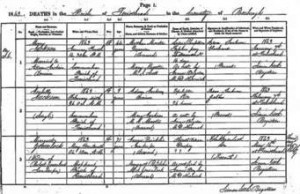
I guess I’m not the only person to ever feel that way, because on this day, July 1, 1837, England and Wales established the Civil Registration system to record births, marriages, and deaths. It is that same system that is used in Ancestry.com to provide valuable records used by genealogical researchers to this day. Of course, in the early days, the records were stored in volume after volume in some dusty corner of a courthouse or something. It was very hard to research family through that avenue, but with the invention of the internet, and the transfer of those records to it, the civil registration of births, marriages, and deaths has opened up many new doors in genealogical research.
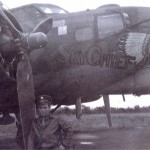 Many times I have written about my Dad’s time in the war, and what he went through, but I’m not sure I truly understood what he went through. Dad never talked about the war much, and maybe that led us to believe that what he went through wasn’t so bad for him. In reality, I don’t think I knew much about Dad’s service time at all. My nephew loaned me a movie called Fortress, and I was very interested in watching it. I don’t know what I expected it to be, but it was not. Everything on the B-17 happened so very fast.
Many times I have written about my Dad’s time in the war, and what he went through, but I’m not sure I truly understood what he went through. Dad never talked about the war much, and maybe that led us to believe that what he went through wasn’t so bad for him. In reality, I don’t think I knew much about Dad’s service time at all. My nephew loaned me a movie called Fortress, and I was very interested in watching it. I don’t know what I expected it to be, but it was not. Everything on the B-17 happened so very fast.
While the movie was quite graphic, and not one that some people would like to watch, it was based on a true story and it gave me a very different perspective about what it was like to fly in a B-17 Bomber. I knew that the life of a ball turret gunner in combat was a mere twenty minutes, and I knew that during the time Dad was on the B-17, there was at least one ball turret gunner who was killed. They tried to save him, but it was not to be. In an instant it was over.

The Flying Fortress, as the B-17 Bomber was called, was one of the safer parts of the war, but that meant nothing when you are flying to a bomb drop and the enemy doesn’t want you to make it. The movie brought home just how hard it was to really spot the enemy planes. They would say that the enemy was right there, and I found myself thinking, “Where?” Then suddenly there they were, and the men on the plane had been firing for several seconds already. It felt like trying to explain how to spot the enemy, and by the time you get the word “well” out, you have already been hit.
While any gunner position was dangerous, I was struck by how exposed the waist gunners were. In case you don’t know, the waist gunners are the guys that shoot out the side doors of the plane. The doors are open, leaving them with very little protection. They had to be on their toes, because the enemy was shooting for their gun, and if they weren’t paying attention, they were shot before they got a second chance to pay attention. That made things really hard, because they also felt a close commraderie with their partner, the other waist 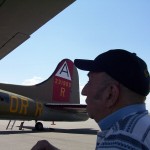 gunner, and if their partner got shot, it was hard to stay on task…but that was hard for any one of the men on the plane.
gunner, and if their partner got shot, it was hard to stay on task…but that was hard for any one of the men on the plane.
Watching the men they worked with every day, get shot and killed became a normal thing. Being normal and being able to cope, are two very different things. These men had to hold it together, while quietly falling apart inside. They knew their friend was dead, and yet they had to do their job. They couldn’t grieve. They couldn’t stop. They had to push that picture of their dead friend way back inside themselves, and do their job. Lives depended on it…including their own. I knew that my dad was on a B-17, but until I watched that movie, I really didn’t understand all of what that meant.
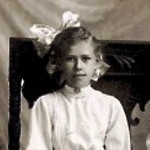 Whenever I read through my Great Aunt Bertha Schumacher Hallgren’s journal, I find something new. I may have read it before, but somehow, a new thought jumps out at me this time. Yesterday, as I was looking through it, I saw what a visionary she was. Many people kept clear family records, dating back for centuries, but the one thing that many of those records were void of was the stories that made up the lives of the people who were listed there. Aunt Bertha mentions that so much of how life was for our grandparents or great grandparents is being lost, because people only kept the birth, death, and marriage records, and never really told the future generation what their ancestors felt like. She was so right.
Whenever I read through my Great Aunt Bertha Schumacher Hallgren’s journal, I find something new. I may have read it before, but somehow, a new thought jumps out at me this time. Yesterday, as I was looking through it, I saw what a visionary she was. Many people kept clear family records, dating back for centuries, but the one thing that many of those records were void of was the stories that made up the lives of the people who were listed there. Aunt Bertha mentions that so much of how life was for our grandparents or great grandparents is being lost, because people only kept the birth, death, and marriage records, and never really told the future generation what their ancestors felt like. She was so right.
I often look for something more in the different sources that I use to build my family history, and even when there is a story, often it is simply and statement saying that the person died on a given day, and was buried in a certain place. While that can be good information, it doesn’t really tell anything about the person. I want to hear about their life. I want to know about some exciting things that they accomplished. Often, people don’t even post their obituary in it’s entirety. That is another sad thing, because it makes it hard to know for sure is this particular person is the ancestor you are looking for. The obituary would tell about their parents, siblings, children, and grandchildren. That information alone can fill in a history that has been missing a lot of really interesting and important information.
Birth and death certificates are another area that seems to be sorely missed in the actual media area of a persons information of Ancestry. Wehn you want to know about an epidemic that has hit, you have a real struggle on your hands. Much research is needed to find out what cause the deaths of people in the not so distant past, and it can be really frustrating. Marriage certificates are hard to find too sometimes. It really makes me sad that all of this documentation is missing from history, and all the stories about life are missing 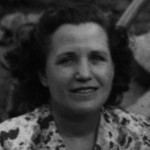 too. It really is up to us to make sure they get in there, just like my Aunt Bertha points out. Just knowing the dates does little to show who they really were.
too. It really is up to us to make sure they get in there, just like my Aunt Bertha points out. Just knowing the dates does little to show who they really were.
I’ve been guilty of this myself. You get in a hurry, and forget to put in the personal information. I suppose it does help that I have written stories about these things, but I have not necessarily connected them with Ancestry, so that other people would be able to read some of it. I can see that I’m going to have to start doing a better job of putting in the stories that go with some of the people I am researching. People’s lives have so many interesting stories in them…so many twists and turns in their journeys, and I want to be like my Aunt Bertha, and pass that information along for posterity.
 Sometimes, when you look back in the history of a family, you come across a number of events that by themselves are devastating enough, but when they are put in the context of the entire history of that family, they can leave you wondering just how much one family can take. While visiting with my aunt, Sandy Pattan a week ago, she told me about a tragedy that I had heard a little bit about before, but really had no details as to who was involved. Now, with a name to put in the story, I set out to find out the exact details. I did find those details, and much more. Enough, in fact to leave me in complete shock.
Sometimes, when you look back in the history of a family, you come across a number of events that by themselves are devastating enough, but when they are put in the context of the entire history of that family, they can leave you wondering just how much one family can take. While visiting with my aunt, Sandy Pattan a week ago, she told me about a tragedy that I had heard a little bit about before, but really had no details as to who was involved. Now, with a name to put in the story, I set out to find out the exact details. I did find those details, and much more. Enough, in fact to leave me in complete shock.
It seems that when my great grandmother, Estella Shaw Pattan was a girl, she survived a tornado that took the life of her little sister. The circumstances were horrible to imagine, because Estella, or Stella as she was called, was doing everything she could do to save her little sister. People just didn’t know what they needed to do in a tornado. Stella was tightly holding her little sister, Ella Shaw who was just six weeks old, when the tornado ripped her out of her big sister’s arms. Ella would not survive, nor unfortunately, would her older sister, Bertha Delilah Shaw, who was just nine years old at the time of her death. During that same event, their grandfather, Angeloah Shaw was missing for a time. He was found however, and he would  live until 1914. These two deaths were devastating enough, but they were not the only tragedy to visit the family of John B Shaw and his wife Harriet Emma Baker Shaw. In fact, at the time of the June 4, 1890 tornado that ripped through the area, the family was already trying to recover from a prior loss.
live until 1914. These two deaths were devastating enough, but they were not the only tragedy to visit the family of John B Shaw and his wife Harriet Emma Baker Shaw. In fact, at the time of the June 4, 1890 tornado that ripped through the area, the family was already trying to recover from a prior loss.
In late 1889, Diphtheria struck the Shaw family. While vaccinations used today prevent most cases of Diphtheria, these weren’t available in days gone by, and so contracting Diphtheria could have been a death sentence, and often was. In late 1889, the John B Shaw family faced a nightmare situation, and they tried to take care of it in the best way they knew how. Unfortunately, for Ethel Ada and Myrtle Shaw, as well as many other people who contracted Diphtheria, it was not enough. Myrtle passed away on November 7, 1889 at just one year five months, and Ethel passed away on December 7, 1889 at four years nine months. These deaths would bring to a total of six the loses in the Shaw family, and four in just seven months.
Yes, I did say, six. In 1878, the family faced their first of four tragedies, and the first of a total of seven children who would die at a very young age. The first child to die of Diphtheritic Croup, was little Mabel Mary Shaw, who was nicknamed May. May died on April 15, 1878 at just three years five months. Diphtheritic Croup is a diphtheritic inflammation of the larynx. Also called laryngeal diphtheria. Basically it is a bacterial infection that causes swelling in the throat. If immediate action is not taken, the child will suffocate quickly. For the 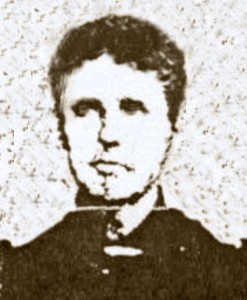 parents, it would be the most helpless feeling. To add to their devastation, their son John Shaw Jr would succumb to Diphtheritic Croup the very next day, April 16, 1878. John was just four years and 5 days old.
parents, it would be the most helpless feeling. To add to their devastation, their son John Shaw Jr would succumb to Diphtheritic Croup the very next day, April 16, 1878. John was just four years and 5 days old.
With all the deaths that hit John and Harriet between 1878 and 1890, death was still not quite done with them. While not much is known about the death of Edna Shaw, who passed away at three months eighteen days, on September 29, 1894, my guess is either sudden infant death syndrome, or another case of Diphtheritic Croup. When Aunt Sandy told me of the tragic loss of Great Grandma Stella Shaw Pattan’s little sister in the tornado, I had no idea that my research would uncover such a tragic set of circumstances. All I can say is that this family had to have been very strong, because in addition to the seven children they lost, John and Harriet raised five more, my great grandmother, Stella, as well as, Maggie, Albert, Elsie, and Orvil to adulthood.
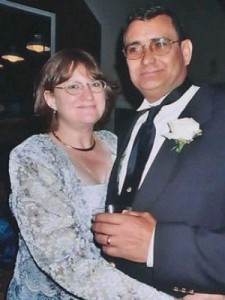 When death silently steals the one you love…your best friend and the love of your life…it is the most life altering moment that anyone can ever experience. You had thought you would grow old together, and now you find that is not to be. Two days ago, the life of my dear cousin, Greg Hushman was altered by the loss of his precious wife, Dustine. Her passing was unexpected, and that made it that much more shocking to all of us…especially Greg. Dustine and Greg met in Casper, Wyoming after both of them had been divorced. It was a second chance for them, and it would become their happily ever after.
When death silently steals the one you love…your best friend and the love of your life…it is the most life altering moment that anyone can ever experience. You had thought you would grow old together, and now you find that is not to be. Two days ago, the life of my dear cousin, Greg Hushman was altered by the loss of his precious wife, Dustine. Her passing was unexpected, and that made it that much more shocking to all of us…especially Greg. Dustine and Greg met in Casper, Wyoming after both of them had been divorced. It was a second chance for them, and it would become their happily ever after.
Their blended family would share many wonderful times. They would see the weddings of their children, and the birth of grandbabies. Their love grew with every passing day, week, and year. Their marriage was blessed in so many ways. At times, it seemed too good to be true. When I asked Greg’s daughter, Stephanie Willard for a little bit of information on Dustine, it was a bit hard for her. They live on different sides of the country, and so don’t get to see each other very often, except on Facebook. Nevertheless, Stephanie said something that has remained in my heart, although she probably doesn’t even know what she said. It was one of the nicest things a step-daughter could say, I think, and the most mature. She said, “Dustine made my dad happy, and that made me happy.” What a tribute!! In this life, filled with its ups and downs, happiness and sadness, love and loss, what better thing to be remembered for than the simple truth that you made your spouse and family happy. To some, that may seem like a less than stellar goal, but not to anyone who has truly found such happiness.
When my sister, Cheryl Masterson, my mom, Collene Spencer, and I went to Washington in 2013 to visit our cousins there, and attend the funeral of my Uncle Jim Wolfe, we had the opportunity to get together for dinner with Greg, and his brother, George. We had hoped their wives could have come, but it didn’t work out that way. It had been a very long time since we saw either of the girls, especially Dustine. As we talked, Greg told us that he had bought Dustine a new car, and you could just see how pleased he was with that. His eyes sparkled with delight, at being able to do this for her. You could see that he was reliving the moment over and over in his memory. Yes, I agree with Stephanie, Dustine made Greg happy, and Greg made Dustine happy too.
It makes me feel so sad to know that Dustine has left us now, but like Greg, I am glad that the constant pain she was in since an accident at UPS many years ago, is over now. She will always be in our hearts, as grief eventually gives way to memories of happier times. We love you Dustine. Rest in Jesus now, until we see you again in Heaven.
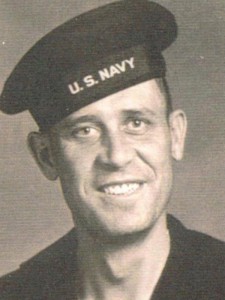 Because he passed away in 1953 at the young age of just 43 years. I never had the opportunity to know my Great Uncle Cliff. My mom tells me that he was well liked. She said he liked to make people laugh, and always had a good joke to tell. That made him someone people liked to be around. He loved stopping by his brother’s house after work. He would leave a few snacks in his lunch pail for all the little kids to raid. Of course, that made him a big hit with my mom and her siblings.
Because he passed away in 1953 at the young age of just 43 years. I never had the opportunity to know my Great Uncle Cliff. My mom tells me that he was well liked. She said he liked to make people laugh, and always had a good joke to tell. That made him someone people liked to be around. He loved stopping by his brother’s house after work. He would leave a few snacks in his lunch pail for all the little kids to raid. Of course, that made him a big hit with my mom and her siblings.
Uncle Cliff was quite a character. He loved to pick on his mom some. When he was younger, and still living at home. He had a job, and his job required that he work a half day on Saturday. Sometimes he would not come right home after work, because he knew his mother would think he was out drinking. Grandma was mad, and indeed thought he was drinking. She decided to write a big “D” on calendar…for drunk. I guess she was hoping to shame him into not doing such things. He did it to tease her, because he wasn’t drinking at all, and the big “D” on the calendar only served as a source of humor for him.
Uncle Cliff married Marie Settell on July 28, 1940, and on their wedding night, the family gave them a real Shivaree. Now for those of you who don’t know, a Shivaree is a mock serenade with kettles, pans, horns, and other noisemakers given for a newly married couple. As sometimes happens in these event, things can get out of hand, resulting in the bride being stolen from the groom for a time, and Uncle Cliff was very worried that they would steal his bride. I suppose that once he realized they weren’t going to do that, he might have thought it was a sweet thing to do, but by that time the Shivaree was over, so he couldn’t relax and enjoy it.
When the United States joined World War II, Uncle Cliff was drafted into the Navy on August 18, 1945, at the age of 36 years. He had only been married five years at that time, and they had already had some sadness in the loss of their first child, Clifford Jr in 1941. I can only imagine how hard it would be to send your husband into war, when you had only been married for five years. But then, many woman have had to do this over the years. They and their marriage would survive the war, and they would have three surviving children, Joy, Gordon, and Judy and a number of grandchildren, but unfortunately, Uncle Cliff would never get to meet them.
 Coming home from the war would not bring the best of news. I’m not sure just how long after coming home, but Uncle Cliff had some health issues, and he unfortunately put off taking care of them, In the end, it would be cancer that would take his life at the far too young age of 43. Uncle Cliff has always seemed to be a bit of a mystery to me…like an great uncle who I knew should have known, but somehow didn’t. He was a missing part of the family. He was my Grandpa Byer’s youngest sibling, and since I knew my grandpa, who was the third from the oldest of the nine children, why wouldn’t I know his youngest brother. Oh, I know that isn’t such an oddity, because a lot of people die at a young age, but it seemed strange to me at the time.
Coming home from the war would not bring the best of news. I’m not sure just how long after coming home, but Uncle Cliff had some health issues, and he unfortunately put off taking care of them, In the end, it would be cancer that would take his life at the far too young age of 43. Uncle Cliff has always seemed to be a bit of a mystery to me…like an great uncle who I knew should have known, but somehow didn’t. He was a missing part of the family. He was my Grandpa Byer’s youngest sibling, and since I knew my grandpa, who was the third from the oldest of the nine children, why wouldn’t I know his youngest brother. Oh, I know that isn’t such an oddity, because a lot of people die at a young age, but it seemed strange to me at the time.
Five years after Uncle Cliff’s passing, Marie would again find love, even though I’m sure she thought it would never happen. She married Walter Oddsey (Johnny) Skaggs. Marie and Johnny were both well liked by the Byer family, and while they moved to California, they kept in touch with them through the years.

